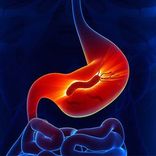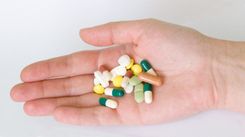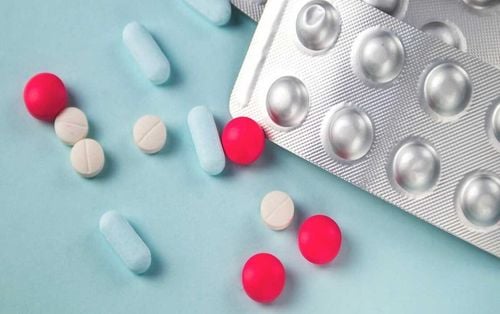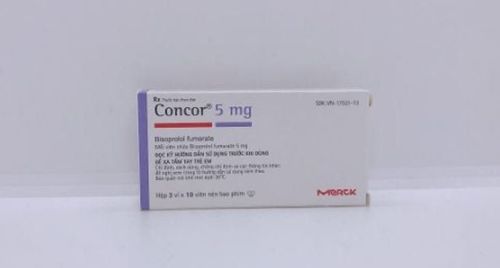Galvus met contains the active ingredient Vildagliptin combined with Metformin, indicated in the treatment of type 2 diabetes. Let's learn about the uses and precautions when using Galvus met through the article below.Galvus met contains the active ingredient Vildagliptin combined with Metformin, indicated in the treatment of type 2 diabetes. Let's learn about the uses and precautions when using Galvus met through the article below.Galvus met contains the active ingredient Vildagliptin combined with Metformin, indicated in the treatment of type 2 diabetes. Let's learn about the uses and precautions when using Galvus met through the aGalvus met contains the active ingredient Vildagliptin combined with Metformin, indicated in the treatment of type 2 diabetes. Let's learn about the uses and precautions when using Galvus met through the article below.
1. Uses of Galvus met
"What is Galvus met?". Galvus met contains the active ingredient Vildagliptin combined with Metformin, prepared in the form of vildagliptin/metformin hydrochloride ratios of 50mg/500mg, 50mg/850mg, 50mg/1000mg. The drug is indicated in the treatment of type 2 diabetes with the following specific uses:
- Galvus met is indicated as an adjunct to diet and exercise to improve glycemic control in patients with type 2 diabetes who are not adequately controlled with metformin hydrochloride, vildagliptin alone or in patients who are being treated with a combination of metformin hydrochloride and vildagliptin tablets separately;
- Galvus met is indicated in combination with sulfonylurea as an adjunct to diet and exercise in patients who are not adequately controlled with sulfonylurea and metformin;
- Galvus met is indicated with insulin as an adjunct to diet and exercise to improve glycemic control in patients who have not adequately controlled glycemic control with insulin and metformin alone.
2. Dosage of Galvus met
The treatment regimen for type 2 diabetes depends on each patient and the effectiveness of the drug tolerance. The recommendations for the dosage of Galvus met are as follows:
- The recommended starting dose of the drug is based on the patient's current regimen of vildagliptin and/or metformin hydrochloride. The drug should be taken with meals to help reduce gastrointestinal complications caused by metformin;
- The initial dose of the drug for patients being treated with Vildagliptin monotherapy but not controlling blood sugar levels: Based on the usual starting dose of Metformin hydrochloride (850mg x 1 time/day or 500mg x 2 times/day), Galvus met can be started with a tablet containing 50mg/50mg x 2 times/day and gradually increased after assessing the adequacy of the treatment response;
- Starting dose in patients not controlled by metformin hydrochloride monotherapy: Based on the dose of metformin hydrochloride being treated in the patient, Galvus met can be started at a dose of 50mg/500mg, 50mg/850mg or Galvus met 50mg/100mg twice daily;
- Starting dose in patients switching from the combination of vildagliptin and metformin hydrochloride alone: The drug can be started at a dose of 50mg/500mg, 50mg/850mg or 50mg/1000mg based on the dose of metformin or vildagliptin being used;
- When using Galvus met in combination with sulphonylurea drugs, it is necessary to consider reducing the dose of sulfonylurea drugs to reduce the risk of excessive hypoglycemia.
3. Side effects of Galvus met
Some side effects that may occur when using Galvus met are as follows:
- Common side effects: Diarrhea, nausea, vomiting, loss of appetite, headache, dizziness, tremors, metallic taste. In addition, patients may experience conditions such as fatigue, joint pain, swelling of the hands, constipation, swelling of the ankles or feet;
- Rare side effects: Runny nose, sore throat, fever, lactic acidosis (symptoms of dizziness or drowsiness, severe vomiting or nausea, abdominal pain, irregular heartbeat, deep and rapid breathing), itching, red skin, vitamin B12 deficiency (symptoms of fatigue, paleness, mental symptoms such as memory loss, confusion);
When using Galvus met in combination with sulfonylurea, patients may experience problems such as tremors, dizziness, excessive hypoglycemia, weakness, and excessive sweating. Patients should see a doctor immediately if they experience side effects such as lactic acidosis, angioedema, liver disease (hepatitis).
4. Notes when using Galvus met
4.1. Contraindications
Galvus met is contraindicated in the following cases:
- People who are sensitive to any ingredient of Galvus met;
- People with severe renal failure (GFR <30 ml/min);
- People with diabetic coma;
- People with acute metabolic acidosis such as diabetic ketoacidosis, lactic acidosis;
- People with congestive heart failure requiring drug treatment;
- People with liver failure, chronic alcoholism, acute poisoning, breastfeeding women, acute conditions that can alter kidney function such as severe infections, dehydration, shock, intravenous injection of iodinated contrast agents, chronic diseases that can lead to tissue hypoxia such as respiratory failure, heart failure, shock, new myocardial infarction.
4.2. Notes when using
Some notes when using Galvus met are as follows:
- Do not use Galvus met in the treatment of type 1 diabetes or diabetic ketoacidosis.
- Perform liver function tests before treatment with Galvus met. These tests should be monitored and checked periodically every 3 months during treatment with the drug. For patients with increased transaminase levels, liver function should be re-evaluated a second time to confirm the results, then liver function should be re-evaluated regularly until the functions return to normal. In cases where AST and ALT levels increase 3 times the normal limit or increase for a long time, the patient should stop treatment with Galvus met.
- The drug is not recommended for use in patients with liver failure or heart failure.
- Pregnant women: There is currently not enough scientific research on the use of Galvus met in pregnant women. Embryo-fetal development studies conducted in rats with the combination of vildagliptin/metformin at a ratio of 1:10 showed no teratogenic effects in the rats. However, Galvus met is not recommended for use in pregnant women unless the potential benefit outweighs the potential risk to the fetus.
- Breastfeeding women: Animal studies have shown that the drug is excreted in human milk. Because of the potential risk of neonatal hypoglycemia associated with metformin and limited human data, Galvus met is not recommended for use in lactating women.
- Fertility: Animal studies have shown that vildagliptin does not impair fertility or early embryonic development. In addition, the fertility of female and male mice was not affected by metformin administered at a high dose of 600 mg/kg/day, a dose approximately three times the maximum recommended daily dose in humans based on body surface area comparisons.
5. Drug interactions
Metformin may interact with drugs containing active ingredients such as Nifedipine, Furosemide, Amiloride, Glyburide, Procainamide, Digoxin, Morphine, Quinidine, Ranitidine, Quinine, Trimethoprine, Triamterene or Vancomycin, etc.
There is no clinical evidence of interactions between vildagliptin and antidiabetic drugs of the same group (Pioglitazone, Glibenclamide, Metformin hydrochloride) and some other drugs such as Digoxin, Amlodipine, Simvastatin, Ramipril, Valsartan or Warfarin, etc.
Some drugs tend to increase blood sugar levels when used with Galvus met such as Corticosteroids, Thiazide diuretics, Phenytoin, Phenothiazine, Estrogen, Nicotinic acid, calcium channel blockers and Zoniazid, oral contraceptives. Closely monitor blood sugar levels and adjust metformin dosage or stop using the drug in these subjects.
To arrange an appointment, please call HOTLINE or make your reservation directly HERE. You may also download the MyVinmec app to schedule appointments faster and manage your reservations more conveniently.













